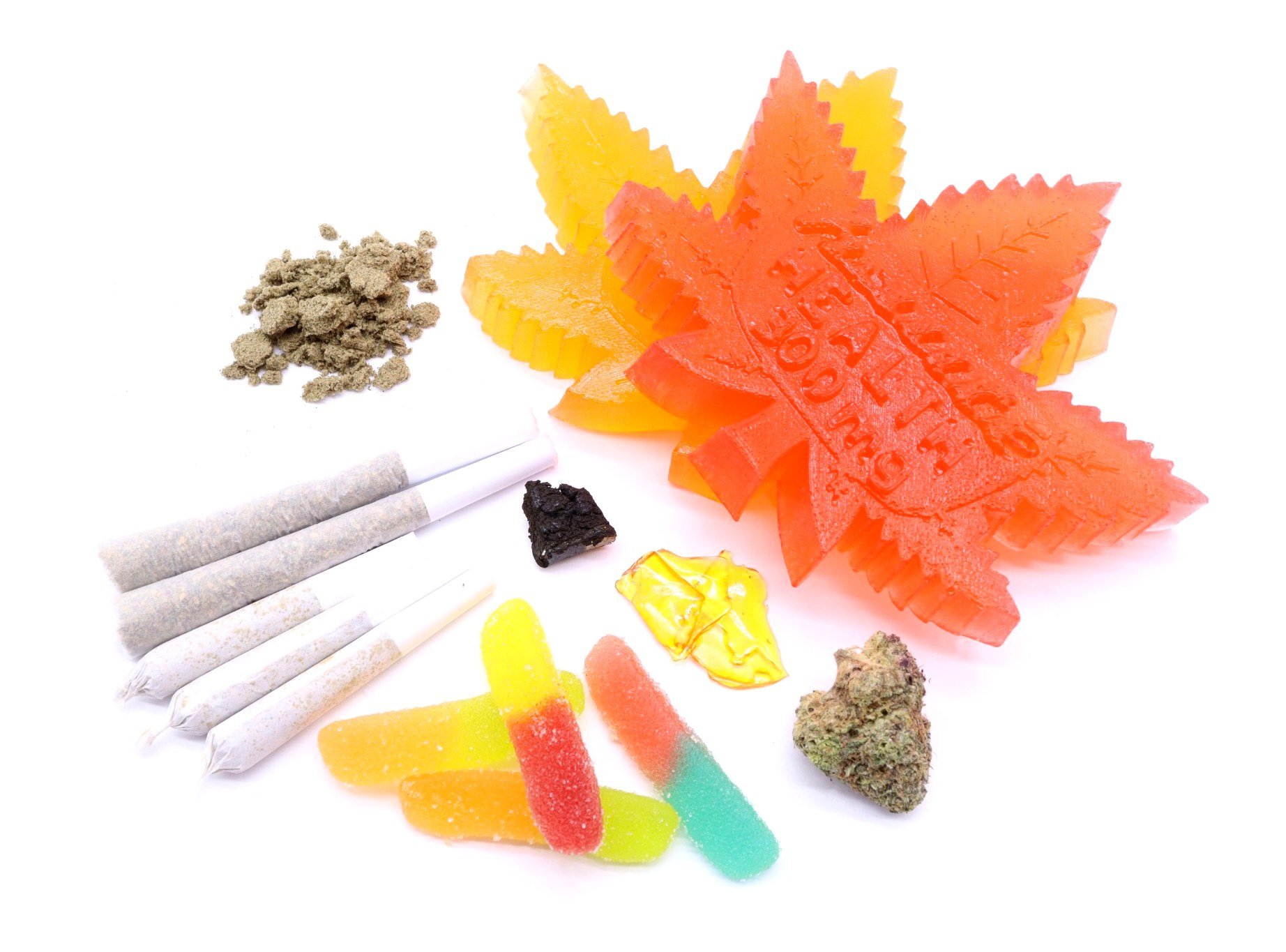We’ve all been there, the first few times you go to buy cannabis you have no idea how much you should order. Cannabis is generally measured within the context of an once, which normally is a pretty low weight, so it’s not uncommon for a first buyer to ask “do you think couple ounces would be enough for just me?” It’s a common mistake, so don’t feel bad if you’ve made it. This is why we’ve created our weed measurements guide, to make you an expert cannabis buyer.
We’ve put together a weed measurements guide to help properly measure the exact amount of weed you’ll need, whether it’s your first time trying cannabis and you want to buy a single gram for yourself or you’re looking to split a few ounces with some buddies, we’ve got everything you need to know.
Before we dive into the specifics of our weed measurements guide we want to highlight how far cannabis measurements have come. There have been so many terms over the year for various different amounts of weed, here are some of our favorites.
Sack: Back in the day a 20-sack or 40-sack was how people would order their weed. The term comes from the size or amount of cash spent on the bag of weed you are buying, usually a 20-sack meant you wanted a gram of weed.
Zip: A zip is a less common term used today but is understood by most people who know the cannabis industry. A zip is in reference to the original Ziplok bags so commonly used to sell weed. An average Ziploc would be able to hold an entire ounce perfectly, which is where the term Zip comes from. Buying a couple zips is a popular term you’ll hear in songs and TV shows.
Matchbox: A matchbox was a unit of measurement used when selling marijuana, commonly used in the as far back as the 1950s. The reference comes from how much marijuana can be stuffed inside a large matchbox.
Size Matters
Stick with us on this one. Weed measurements at the lower end of the scale use the metric system, referencing grams, but as the weight moves up measurements switch to ounces. Thanks to our second cousins to the South for that one.
Gram
No, not Instagram…. millennials eh? A gram is the lowest amount of weed one can buy online or through a licenced producer. Also known as a dime bag, the costs can vary depending on your source. You can buy a single gram of weed online for as low as $3 dollars or you can purchase a gram through a licensed producer from anywhere between $6-$14. Buying a gram is commonly used when you want to try a new strain to see if it’s right for you, while avoiding buying a bunch of weed you may not like.
Eighth
An eighth is the most common purchase weed smokers make when shopping for cannabis. When using the term eighth it is in reference to an eighth of an ounce, which is around 3.5 grams. Most people buy an eighth when they purchase weed to last them a week or two to avoid having to make multiple trips to their dispensary or online store. The average cost of an eighth in Canada can vary on the quality of strain. Most online retailers like Haute sell an eighth for as low as $10, where the licenced producers sell an eighth for around $25-$35.
Quarter
The Quarter is straightforward, meaning a quarter of an ounce or seven grams. Usually the more seasoned smokers buy a quarter and it lasts a week or two. Costs again can vary, Haute sells a quarter for as low as $20 and the licenced producers sell for anywhere between $50-$70.
Half Ounce – Ounce
To round it out you have both a half ounce and an ounce, 14 grams and 28 grams respectively. This is the highest amount you can usually buy at a licenced producer with the average cost between $120-$180 for a half ounce. Online sellers such as Haute sell an ounce for as low as $77. People refer commonly to ounces as Os or Zips as we mentioned before. In Canada, the limit to the amount of grams you can buy is 30. So an ounce is the max you can buy through a licenced Canadian producer. This breaks down to:
- 150g fresh cannabis
- 450g edibles
- 5g concentrate
- 30 seeds
- 2250g liquids
Get What You Paid For
When buying weed it is important you get the exact amount you pay for, especially when buying high end expensive products. As part of our weed measurements guide here are some ways you can accurately measure your cannabis so you know you aren’t getting ripped off.
Use a scale
A scale is the most accurate way you can weigh your marijuana to make sure you are getting everything you paid for down to the decimal point. Digital scales with at least 2 decimal points is your best option for weighing cannabis. When using a scale it’s very straight forward, make sure when you turn it on you and the scale reads 0, you can then either set the marijuana directly on the scale or you can put it in a small container and place on the scale. Don’t forget to offset the sale to recognize the weight of the container or else your weight will be inaccurate. Avoid using a kitchen scale to measure your weed due to the fact that they are not very precise compared to a smaller cannabis based scale.
Eyeball
The eyeball method applies more to the seasoned cannabis users. Over time you will be able to recognize the difference between 1 gram or 2 or a eighth vs an quarter. It may not be the most effective way to measure weed, but it can be very handy in a pinch.
The Penny Method
This is more of a creative approach but still effective. Grab a ruler and balance the ruler on you’re your finger, place a penny on one end and your weed on the other. A penny weighs 2.5 grams, which should give you a good jump off point on how much weed you have.
Your Phone
Smart phones are smart for a reason. There are various apps available on the App Store or Play Store that will help with your weighing needs. Though not entirely accurate, it’s still better then nothing.
It’s What In The Inside That Matters
The measurement of THC content varies among each individual strain, especially when it comes ingesting cannabis using edibles. Continuing with our weed measurements guide we lay out the key factors that play a huge role such as type of product and individual tolerance. Many people don’t know that it’s the combustion of flower cannabis that activates the compounds to feel the effects of being high. When heating flower cannabis a chemical process known as decarboxylation is activated, which then converts a chemical compound into THC.
Smoking VS Eating
When you smoke THC, either through a vape, joint or bong, THC reaches the bloodstream at a fast pace once it’s absorbed by the lungs. When you eat an edible, your liver brakes down THC which is a much slower process.
When you smoke cannabis the effects are felt almost immediately, your body starts to relax, euphoria kicks in and your thoughts become more creative. These effects last for about an hour before they start fade away, this allows for a better understanding of how much you should consume without going overboard. This makes smoking THC a much easier way for controlling THC dosage. Understanding the THC percentage of the particular strain you are smoking is important. If you’re smoking a cannabis strain with a relatively low THC level such as 5%-10% you should be able to ease into the effects and get a better idea of how much you should consume before going overboard. If you are smoking on a potent THC strain with 20%-30% a single toke can cause a strong euphoric effect and may be too much right off the bat.
Edibles are a very different story. Edibles require a longer process to breakdown in your body before you start to feel the effects. Edibles can take anywhere from 30 minutes to 2 hours to start to kick in. Once an edible kicks in the length of the high usually lasts for several hours, this makes it extremely easy to over do it on the THC. The same logic surrounding smoking flower and THC levels should be applied to edibles. It’s important to note while you read our weed measurements guide that eating an edible with 2-5 mg of THC the effects should be manageable, but if you are eating an edible with 20 plus milligrams you need to be prepared for a strong acting effect to kick in.
Introducing: Microdosing
When we created out weed measurements guide we wanted to make sure we focused on THC microsdosing. Microdosing is a relatively new form of consuming THC, only hitting the mainstream for the last couple of years. Microdosing is when you take a small amount of cannabis in order to gain the medical benefits of THC while avoiding the psychoactive effects that can interfere with your daily life.
Microdosing is typically associated with hallucinogens like LSD or Magic Mushroom, to help deal with mental health issues such as PTSD and severe depression. Many people are turning to microdosing THC in order to help with conditions such as depression, stress, anxiety, pain, focus, sleep and insomnia. Though more research is needed, people are seeing the value of consuming less THC to deal with their aliments, instead consuming low levels of THC to avoid the negative side effects of consuming too much THC, such as heightened senses and increased nervousness and anxiety.
The recommended dosage for microdosing THC is 5 mg for men and 2-3 mg for women. It is important to know what strain of cannabis you are using. Indicas are associated with a sedative effect, while sativas usually provide an uplifting, energizing effect. There are other factors that should be considered as well such as body type, the time of day day, mood, appetite, tolerance, and sleep habits. It’s important when reading our weed measurements guide that your understand that microdosing is very much a trail-and-error approach. It is recommended that you start slow, taking a low dosage for approximately three days then increase if you feel necessary. It is also recommended that those who consume cannabis on a daily basis should refrain for 2 days, which resets your endocannabinoid system (reduces tolerance).
There are various methods of consumption when microdosing, some more effective then others. You can smoke or vape, but it is difficult to control the amount of THC you put into your system. It’s best to start with one puff, wait 5 minutes to feel the effects, then take another is necessary. The most optimal way to microdose is through products such as tinctures, oils or edibles, this allows for a more accurate control of your dosage. Though edibles can be unreliable at times, with untested edibles being unreliable in their THC consistency.
It is also recommended that when you microdose THC it is beneficial to add a similar ratio of CBD with your THC. When CBD and THC are combined there is a longer therapeutic period, which helps reduce the side effects of THC, therefore increasing the benefits of microdosing THC.
As we wrap up our weed measurements guide we should note that microdosing is very much in the infancy stages of research and development and more studies need to be conducted, but with the medical benefits of THC already proven it’s a safe to say microdosing will only grow in popularity as time goes on.


